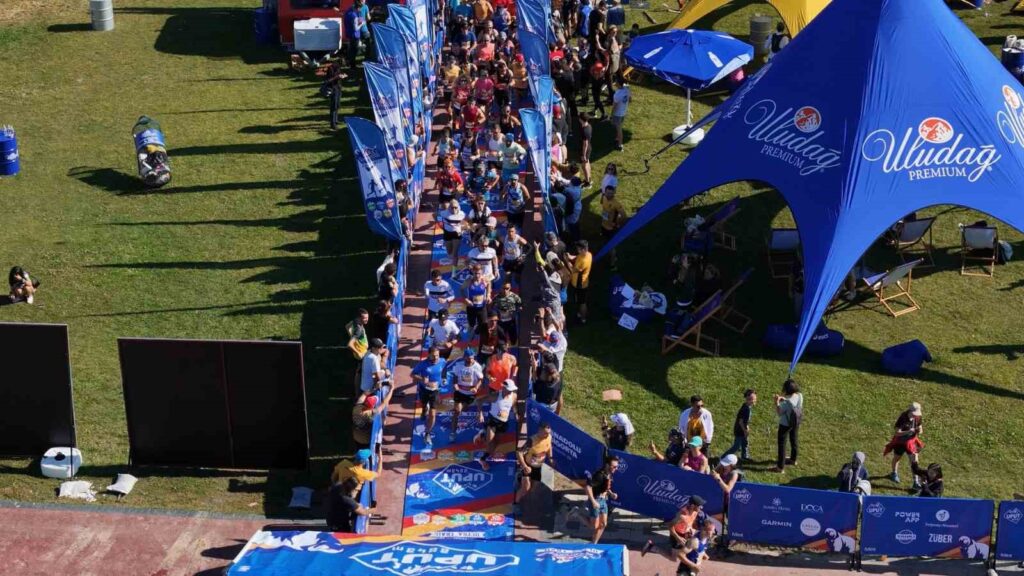Özcan Şimşek evaluated how the training compensation for football players is calculated
Özcan Şimşek, the Chairman of the Board of Directors of YAFA Artificial Intelligence Academy, made comments on how the training compensation for football players is calculated. Particularly focusing on football academies, Özcan Şimşek emphasized…

Chairman of YAFA Artificial Intelligence Academy Board of Directors, Ozcan Simsek, made evaluations on how training compensation for football player development is calculated.
Chairman of YAFA Artificial Intelligence Academy Board of Directors, Ozcan Simsek, made statements regarding how the training compensation, especially concerning football academies, is regulated according to FIFA regulations. Simsek stated that a football club is entitled to training compensation if a player transfers before the age of 23 after being trained and developed between the ages of 12 and 23. He mentioned that ‘Training compensation for football players is regulated in the status and transfers directive for professional footballers. According to the directive, the training and development of players takes place between the ages of 12 and 23. In the calculation of training compensation, TFF records are taken as basis and the calculation is made from the date when the training actually started. In the calculation of the training compensation, clubs are divided into four categories based on their training investments. TFF determines and announces the categories that clubs are included in and the amount of seasonal training compensation for these categories before the first transfer and registration period of each year.’
‘If a player reaches the age of 23, training compensation is not paid when changing clubs.’
Simsek, who stated that the determination and payment of training compensation is based on the consent of the relevant clubs and any disputes in this regard are resolved by the Dispute Resolution Chamber, said, ‘As a rule, the training compensation is paid for all transfers the player makes professionally until the age of 23. In temporary transfers, the club that temporarily transfers the player is entitled to the training compensation corresponding to that period. In the calculations, the categories in which the clubs were at the time of the transfer are taken into account. The existence of training compensation does not prevent the application of termination compensation. In case of termination of the contract by the club unfairly or by the player for just cause, the club in question cannot claim training compensation. Age corrections are not taken into account in the calculation of the training compensation. Training compensation is not paid when the player reaches the age of 23 and changes clubs.’
Regarding the calculation and payment of compensation in the transition to professionalism,
Simsek, who made statements about how the compensation will be calculated and paid in the transition to professionalism, said, ‘The training compensation for the first transition to professionalism of a footballer is calculated based on the categories of the clubs that trained the player and the seasonal training compensation amount determined by TFF for these categories. However, in order not to determine the training compensation for young players at a high level, the training compensation is calculated based on the expenses of the seasonal training compensation of the fourth category until the end of the season in which the player turns 12 and completes the age of 15, regardless of the categories of the clubs, during the four-season transfer and registration period. For this, the amount of training compensation in the categories of the clubs that trained the player from the age of 12 is multiplied by the number of seasons he was registered as an amateur in that club. In the case of amateur players who have been registered with more than one club within the same season, only the last club registered in that season has the right to claim training compensation. The resulting training compensation is paid to the relevant club or clubs by the new club that signed the professionalism contract with the player before the registration of the contract or is deposited with the TFF to be paid to these clubs. If the club that deposited the compensation does not present a definitive decision within 30 days stating that it is not obliged to pay the training compensation or does not prove that a lawsuit has been filed regarding the justifiability or unjustifiability of the termination, the deposited compensation is paid to the other party. In case a lawsuit is filed regarding the justifiability or unjustifiability of the termination, the compensation is deposited until the decision of the lawsuit is final and then returned to the relevant party or paid in accordance with the decision. Unless documents showing that the payment has been made are submitted to the TFF, the contract is not registered.’
Simsek, talking about the calculation and payment of training compensation in subsequent transfers that the player will make without disturbing the professional status, said, ‘In case a professional footballer transfers from a lower category club to a higher category club, the training compensation paid by the former club for the player, and also the product of the training compensation of the former club’s registration period and the seasonal training compensation determined by TFF for the category of the club to which the player transferred, is paid by the new club to the club where the player’s contract ended. In addition, in case the player transfers to a higher category club within the same season, the loss arising from the training compensation of the former club is paid by the new club, while the training compensation rights of the player’s last club are reserved. If the registration period of the player’s last club is less than a season, a one-season compensation amount is taken as the basis for the calculation of the training compensation. In case a professional player transfers between clubs in the same categories; The training compensation calculated by multiplying the number of seasons the player was registered in the last club with the registration period in that club and the seasonal training compensation determined by the Federation for that category is paid by the new club to the last club where the player was registered.’
‘Training compensation is calculated based on the category of the club the player transferred to’
In case a professional player transfers from a higher category club to a lower category club, Simsek stated, ‘Training compensation is calculated based on the category of the club the player transferred to. The calculation is made by multiplying the number of seasons the player was registered in the last club with the seasonal training compensation amount determined by TFF for the club to which the player transferred. The resulting training compensation is paid by the new club to the last club where the player was registered. In addition, in case the player transfers to a higher category club within the same season, the loss arising from the training compensation of the former club is paid by the new club, while the training compensation rights of the player’s last club are reserved. If the registration period of the player’s last club is less than a season, a one-season compensation amount is taken as the basis for the calculation of the training compensation. A professional player registered in a first, second, or third category club who transfers to a fourth category club does not receive training compensation. However, if the player transfers back to a higher category club within two years, the former club retains the right to claim training compensation.’







